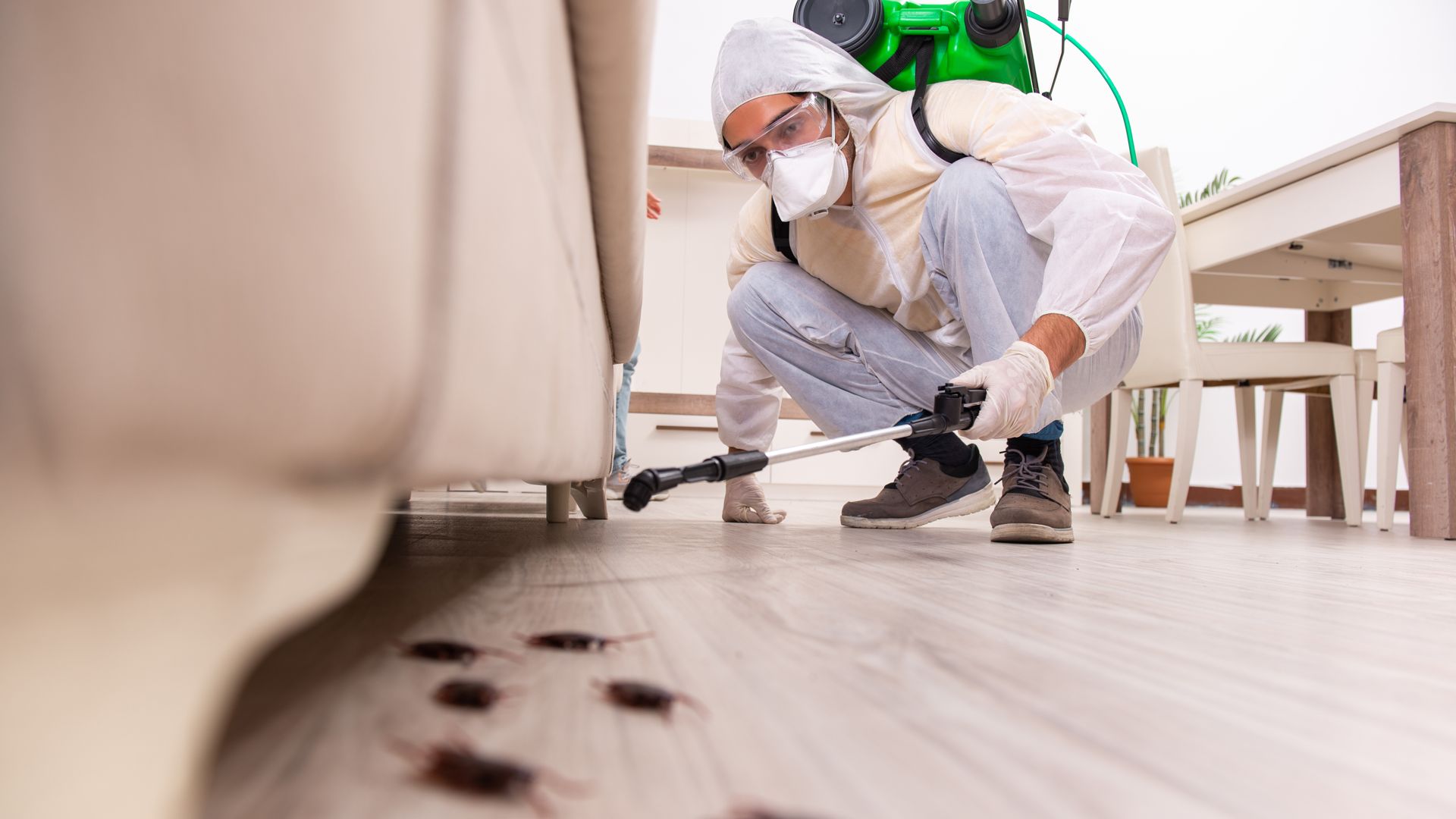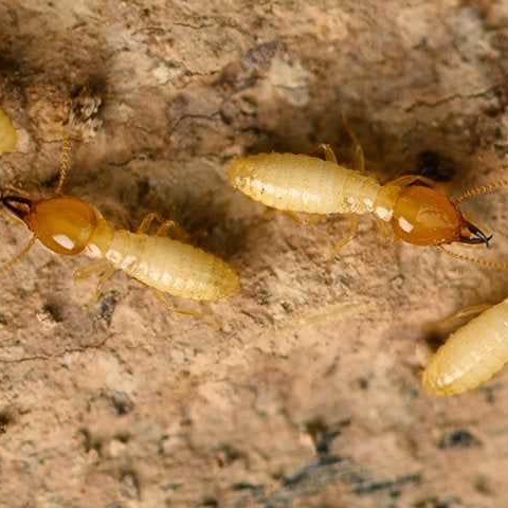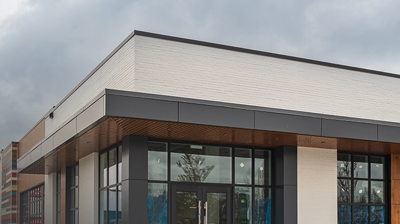
Termites be gone: proven techniques for successful termite control
Successful termite control is a process. If you understand each of the parts in the process, you'll have the best chance of guarding against termite damage. The three parts are termite prevention, termite inspections, and termite elimination. Join us today as we look at how these fit together. We'll start with how to perform a termite inspection to identify the signs of termite activity. We'll explain how termite infestations start and the steps you can take to prevent termites from selecting your home or business. We'll end by looking at how to successfully stop termite workers and eliminate termite colonies. If you would like to speak with someone directly for fast answers to your termite questions, call us or connect with us through our contact page. HomeShield Pest Control offers trusted termite pest control in Vero Beach and advice for all of your pest concerns.
Contact Us For Termite Control Done The Right Way
It isn't easy to detect termitesk, but you don't have to keep watch alone. HomeShield Pest Control offers annual inspections to help you catch warning signs early. When it comes to preventing termites, there is no better way than professional-grade termite control solutions. We can help with this as well. And, of course, when you need termite removal, professional termite control service is a must.
If you're in Vero Beach, contact HomeShield Pest Control for inspections, prevention, or targeted termite control. You don't have to wait to see signs of termites in your house or on your property. Contact us today to start the conversation about how to successfully protect your property from termite damage.
How To Identify Signs Of Termite Activity
The warning signs of a termite infestation may show up unexpectedly as you're out and about in your yard, or you can take the time to go looking for signs. In both cases, it helps to know what signs you're looking for. Let's break them down.
Swarmers: If you find termites with wings on your property, you know you're in trouble, but you may not know how much trouble. Winged termites, also referred to as swarmers, are reproductive termites. It takes years for a nest to produce swarmers. Once created, they exit the nest and take to the air. Since they are reproductives, they're not interested in taking a long flight. They want to quickly find a mate, which is why they gather into a swarm. It is also why they don't travel far. They select a mate and get right to work finding a suitable location to make a nest. If you see winged termites on your property, it is possible that you already have an active and mature termite infestation. Therefore, this isn't a great way to detect termites.
One Swarmer: Finding one swarmer is typically an early warning sign. You can see one on your property without having active termites. But, the trick is seeing that one tiny swarmer. A swarmer is only about ? of an inch long. That length includes the wing length, so you won't easily notice one that lands on your skin and then flutters away. A helpful identifying trait to look for is the shape of the wings. Termite swarmers have stacked wings that are shaped like an elongated teardrop. When slightly spread, the wings take on a heart shape.
Wings: Termite swarms come and go quickly. Sometimes, the only warning sign are the wings they shed during the mating process. If you find many equally sized wings on the ground, that is a sign of a current and active infestation.
Termite Workers: You may see these tiny insects in your yard and not realize you're looking at termites. Often, workers are mistaken for fat white ants or maggots. One reason for the misidentification is that termite workers are only about ? of an inch in length. Here are two helpful facts to keep in mind. First, there is no such thing as a fat white ant. If you think you're seeing fat ants, they're almost definitely termites. Second, maggots don't have legs. If you see tiny pale-colored insects that look like fly larvae but have six legs, they're likely termites. When you see termite workers, it is a sure sign that you have termites actively exploring your property just below the surface.
Tubes: The termites that are the greatest threat in our area are subterranean termites. These often create mud tubes on foundations and other surfaces. If you see thin wiggly lines of mud, that is a bad sign. You could have termites actively feeding on your home. You can find out by breaking a piece off the tube. Check back in a few days to see if the tube is whole again. If so, you have active termites. Sorry.
Damage: Most of the damage subterranean termites do is hidden within the wood they're eating. You may get lucky and find damage if you inspect dark, damp areas on your property. These termites don't like dry conditions or light sources. Usually, termite damage isn't detected until it is extensive because these insects are incredibly sneaky.
When you find signs of termite activity, how worried should you be? Are termites in Vero Beach really as bad as you've heard? Let's look at how termite infestations start and explain some of the reasons why it is bad to find these wood-damaging pests on your property.
How Termite Infestations Start
There are two ways termites may come onto your property. The first is obvious. Termite swarmers can start an infestation. Winged termites select mates and establish nests. It is their sole purpose in life. Another way a nest may start in your yard is when worker termites find an ample source of food, and reproductives are sent through ground tunnels to create a nest. When termites enter your yard this way, they may leave no signs for you to find.
Once a nest is established, the queen and her faithful king work hard to grow a population. After a few years, when the nest has matured, it will produce swarmers. These will go out to create even more nests. Therefore, it is best to deal with termites as soon as you see them. You don't want them to have the chance to create more nests.
As termites grow a population, they'll eat wood on your property or in your home. Unfortunately, as we pointed out, the evidence of termite damage is often subtle. Since termites are so sneaky, it is best to take steps that don't require you to detect them. Let's look at how to make your property less of a target for termites in Vero Beach.
Prevention Is Critical To Effective Termite Control
Termites are simple organisms. If you know what will make worker termites want to explore your yard, you can actually prevent them. There are also ways to make it harder for termites to get into your home or actively explore your yard without you detecting them. Let's look at both.
- Dead branches are ice cream for termites. You can prevent termites from finding this food source by picking branches up. As you pick them up, refrain from stacking them in a pile in your yard. Instead, remove them or put them in a container to keep them off the ground.
- Campfire wood is another delicious food source. Do you have a backyard fire pit? Consider putting the wood on a rubber mat or elevated platform. Doing so will get the wood off the ground and make it harder for termites to get to it. It will also force termites to create mud tubes if they want to feed on the wood, increasing your chances of seeing termite activity.
- Remove logs, stumps, and other sources of wood. In general, it is best to not have any organic sources of wood on your property if you can help it. These are a strong attractant.
- Nurse dying trees back to health. There are many reasons to revitalize unhealthy trees. Decaying trees can pose a threat to people, automobiles, and your home. But getting a tree doctor can also make that tree less of an attractant for termites.
- Address structural wood that goes down into the soil. For example, a back deck with wood posts entering the soil is a direct route for termites. If you remove the posts from the ground and pour concrete foundations, you'll get the wood out of the soil where termites can enter it, and force them to create mud tubes to get to the wood supports above the ground.
- Termite workers need moisture for survival. It is one reason why they have to build mud tubes. It is critical to address moisture problems on your property if you hope to keep termites away. Clear out any obstructions in your gutters and make sure rainwater is directed away from your home.
Do you see how termite prevention works? If you take these steps, and other steps like them, you'll make it hard for termites to sneak around in your yard and nibble on your property right under your nose.

Our Pest Control Services
We Provide Reliable Home Pest Control And Commercial Pest Control Solutions.
Why Our Customers Love Us
HomeShield Pest Control received an average rating of 5.0 out of 5 stars from over 8000+ reviews.
-
Homeshield was great to work with!“Homeshield was great to work with! My wife and I encountered a really bad termite problem at our new home during the renovation phase, and needed treatment asap so that renovation could resume. Mike drove all the way down for an inspection, and was very thorough in his explanations. He was able to match a competitor's price for the treatment and locked in a day for the following week. Daniel and Elias, the technicians, were very communicative about their ETA and did a good job explaining their respective roles. All in all, a quick and easy process. Thank you, Homeshield!”- James Y.
-
Pleasant, friendly and respectful.“Bronson announced his arrival and departure. He inquired if there was anything specific that we wanted done prior to him starting his regular service. Pleasant, friendly and respectful.”- Joseph S.
-
Will continue using homeshield!“
Amazing work! Switched from Terminex as I was tired of having scheduling issues and wanted something eco friendly for my dogs and upcoming baby.
”
I definitely recommend trying to get Jose Garcia as your technician as he was very communicative and kept us updated throughout the service process.
Will continue using homeshield!- Chris P.M. -
Humble and helpful. Does what ever we are asking for.“You guys provide very quality service. We are very happy with the service. Every time the person comes to our place to provide service is very humble and helpful. Does what ever we are asking for. Thank you.”- Arif S.
-
Excellent experience. Super professional and thorough“
Excellent experience. Super professional and thorough. Found them through yelp and they called immediately with affordable options and set up an appointment. The technician was wonderful. Would highly recommend.
”- Samantha S. -
Quote came within minutes and price was very reasonable.“
Dee provided a very thorough and detailed inspection. Walked us through the entire process and what we could expect throughout the initial services and beyond. Quote came within minutes and price was very reasonable.
”- Jason D. -
Ben was FANTASTIC“
Ben was FANTASTIC in every way, He came to give me an estimate on my home, was on time, polite, knowledgeable, and extremely professional in how he handled everything. Had 4 other termite co. to give me an estimate, not even close to Ben's expertise, I would give him a 10 if I could. Will definitely use him in all my other projects , they are a lot since I am in real estate and have many clients.
”- Judy M. -
Victor, was very professional, helpful and informative.“
We had a great experience. They were able to work with our schedule to make a quick appointment. The service professional, Victor, was very professional, helpful and informative.
”- Mark S.

Featured On








.svg.2405150737550.png)






